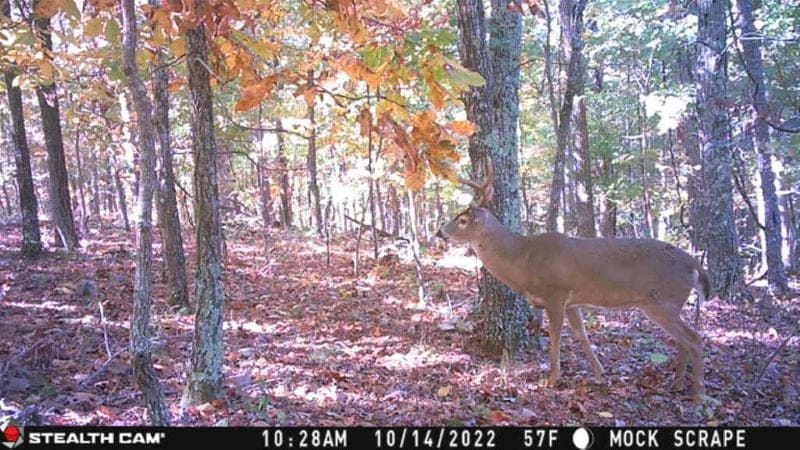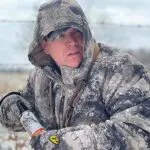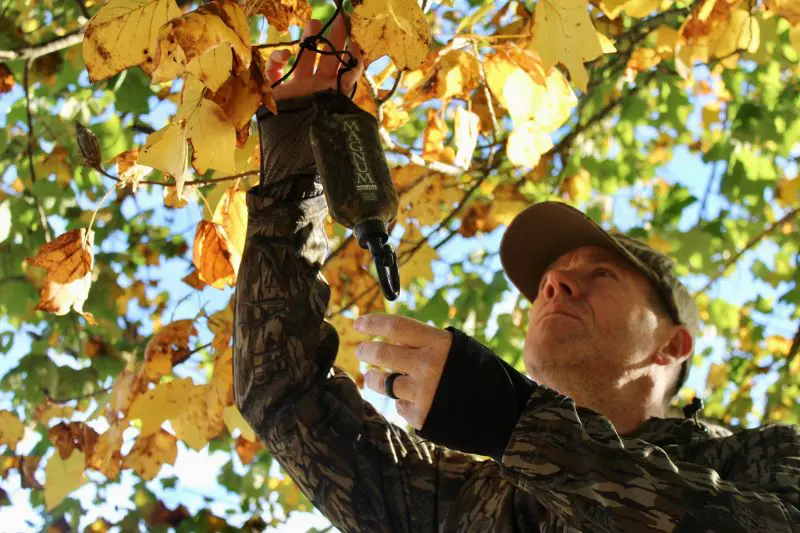Scrapes are a critical element of deer hunting strategy. They provide insights into buck behavior, and movement patterns, so hunters know when to hunt scrapes and can significantly enhance one’s chances of success.
A few years back, I took a mature buck after spotting two does heading to the scrape I was hunting. They were soon followed by a young buck who marked his presence by rubbing his forehead gland on the overhanging branch. Just after the action around the scrape settled, my buck emerged from the timber, chasing a doe across an open field. When I harvested him, I didn’t realize until the next day that my game camera had captured him at another nearby scrape the previous week. In true November fashion, I had received the first daylight picture of that mature buck at the scrape in the first week of the month. Just a week later, I was blessed with shooting him nearby, along another field edge. It confirmed a theory many hunters hold: when mature bucks start hitting scrapes in the daylight, it’s time to be in the stand.
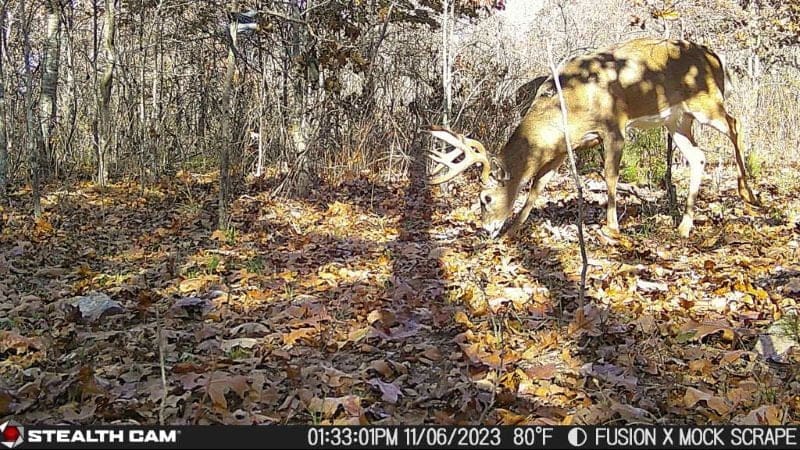
The Best Times to Hunt Scrapes
Pre-Rut Period
The most effective time to hunt scrapes is during the pre-rut period, typically from late October to early November. Bucks become increasingly active as they prepare for the rut during this time. Scrapes are often established as bucks communicate their presence to other deer and signal their readiness to mate.
So, what is the reason for the increased scrape activity during late October and early November? Bucks start to visit scrapes regularly, mainly during the late-night hours, as well as the occasional evening or early morning. Young and mature bucks will tend to freshen existing scrapes and create new ones, which makes it an opportune time to set up a stand nearby.
During the pre-rut, bucks often follow predictable patterns as they check scrapes for the scent of does. Knowing the location of these scrapes allows hunters to position themselves effectively, which is why many hunters position most of their game cameras on a scrape during this time.
As the rut approaches, bucks become more erratic in their behavior due to increased testosterone levels and the presence of does. While they still visit scrapes, their activity may vary as they start to chase does.
While scrapes can still be visited, the frequency may decrease as bucks focus on actively pursuing does. Hunting near scrapes during this time can still yield results, particularly if you can identify scrapes being checked by dominant bucks during the daylight. In my experience, once a buck “daylights” at a scrape, it will typically be used for a week or so, and then he begins to abandon the scrape for a period while the rut hits its full peak.
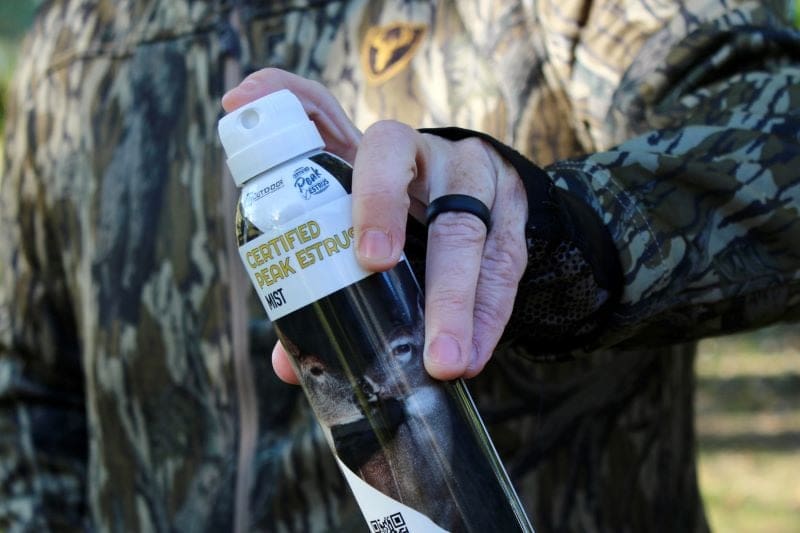
When Not to Hunt Scrapes
During Peak Rut
During the peak rut, typically from mid-to-late November, bucks become preoccupied with chasing does. This phase dramatically alters scrape behavior.
Bucks often abandon scrapes during the chase, focusing instead on finding and following does. This means scrapes may go unchecked for several days, making them less reliable hunting spots. Instead of relying on scrapes, hunters should focus on travel routes and bedding areas where they can intercept bucks chasing does. Observing a does conduct becomes crucial as this behavior dictates buck movement. Although bucks may check their scrapes during the peak rut, it is not patternable enough to spend hours in a treestand waiting for that one time that they may appear.
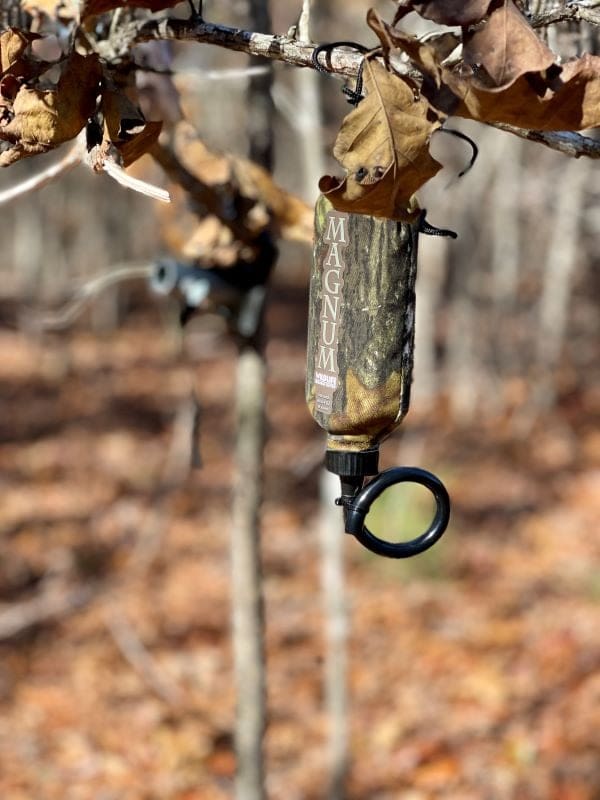
Second Go Round Of Scrapes
After the rut, which usually occurs from late November to early December, scrape activity can resurface, particularly as the breeding season ends and bucks begin to reestablish their territories.
Post-rut, dominant bucks often return to their scrapes to reassert dominance and mark their territory. The fresh scents of does who were not bred during the rut will come into estrus a second time; before they do, bucks often ramp up scrapes again to attract them and show rival bucks of their renewed activity.
As food sources become limited and deer move into their winter patterns, scrapes can be a reliable indicator of buck movement. Hunters can capitalize on this by setting up nearby reactivated scrapes to intercept traveling bucks during the so-called second rut.
Understanding when to hunt scrapes is vital for any successful deer hunter. The pre-rut is the optimal time, with scrapes providing valuable insights into buck behavior. As the rut peaks, hunters should shift focus away from scrapes to adapt to changing deer activity. Finally, after the rut, scrapes can become active again, offering another opportunity for hunters to connect with deer as they reestablish their territories. By keenly observing these patterns and adjusting strategies accordingly, hunters can significantly improve their chances of success in the field.
